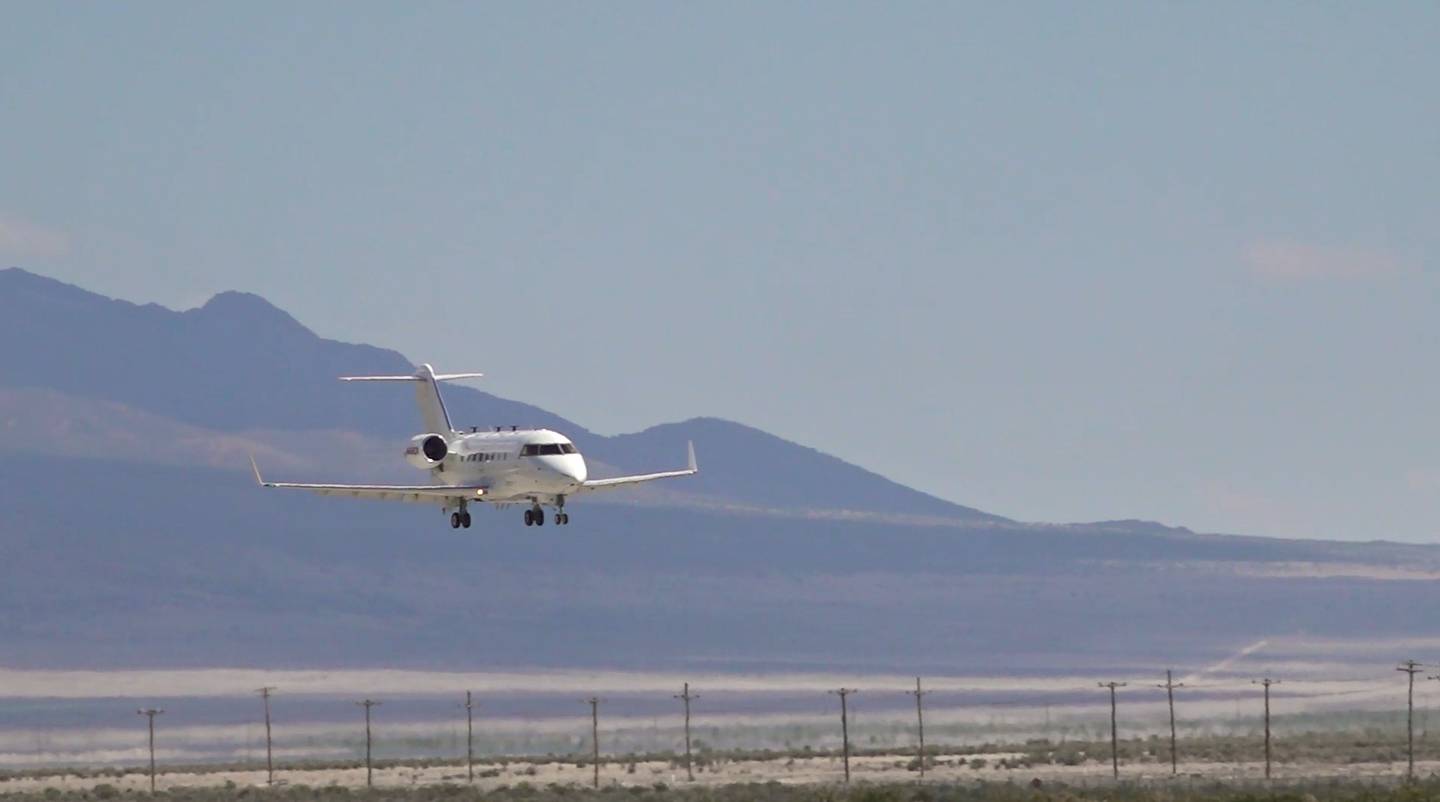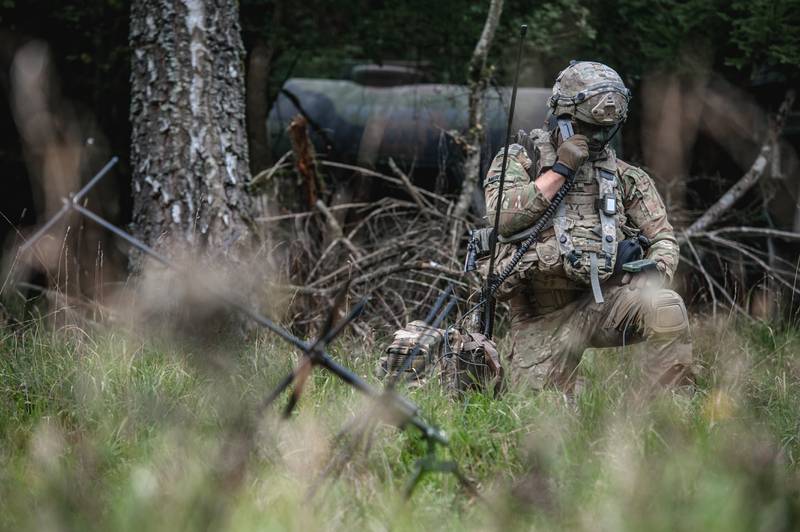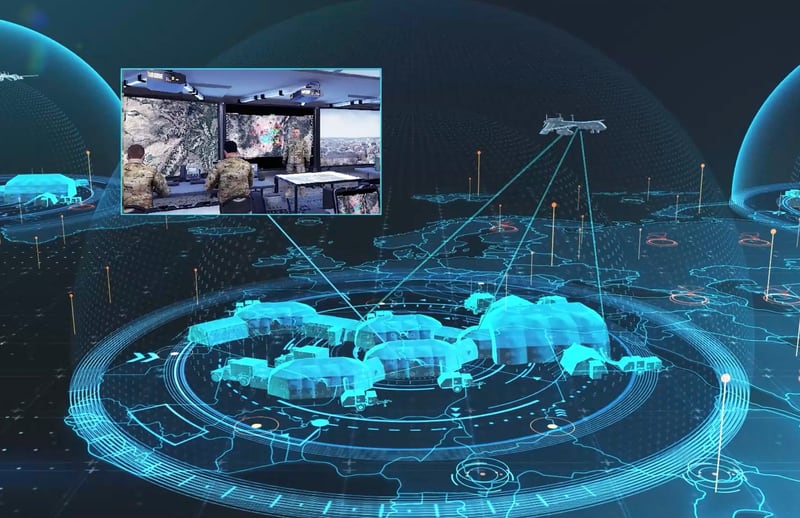WASHINGTON — After spending years at the U.S. Army’s one-stop shop for everything related to electronic warfare and sensor development, including a stint as boss, Mark Kitz is moving on.
Kitz on June 23 was named the next leader of the service’s Program Executive Office Command, Control and Communications-Tactical, or PEO C3T. He’ll succeed Maj. Gen. Anthony Potts, formerly of PEO Soldier, who took the post last year.
The change means Kitz is trading missile warning suites, aerial jammers and biometric tools — the bread and butter of PEO Intelligence, Electronic Warfare and Sensors, or PEO IEW&S — for radios, satellite connectivity and networking upgrades once recognized as capability sets.
In an interview with C4ISRNET on June 23, Kitz reflected on the state of Army electronic warfare, the service’s ongoing reorganization of cyber and networking programs, and some of his accomplishments.
This interview was edited for length and clarity.
How has the Army’s electronic warfare environment changed during your time at PEO IEW&S? Is the service on the right track? What are your parting recommendations?
I came to PEO IEW&S 12 years ago. I was originally working intel, intel processing, and then migrated toward the electronic warfare portfolio.
In the time when I started at the PEO, our investment in electronic warfare was very nascent: significant investment in counter-improvised explosive devices — specifically radio-controlled counter-IED — getting after remote triggers to threats to our forces, especially ground combat forces. So CREW Duke devices.
All of our electronic warfare investments were very reactionary. The threat is developing or delivering a capability, and our electronic warfare investments were to counter that threat or to counter that capability.
Over the last three years, we’ve seen a significant investment by our adversaries in affecting the battlespace and spectrum. Jamming and spoofing, and in a much more surgical way. I’ll use counter-GPS as an example. In Ukraine now, you’re seeing significant investment in small form factor, surgical ways to deny GPS, which is a significant event if you’re operating without that capability.
Over the last three years, the most significant acknowledgement and investment has been that the U.S. Army can, and needs to, build windows of opportunity by being active in the spectrum. That’s both from collection and from electronic attack.
RELATED

But we’ve got a lot more to learn. We’ve invested in programs like Terrestrial Layer System. We’ve invested in programs like Multi-Function Electronic Warfare-Air Large, which is an aerial-based electronic attack system.
We need to be able to get these systems in the hands of units so they can exercise, operate and learn how these active, non-kinetic ways to affect the operation will actually affect the way they operate.
I think there’s a significant investment in building these windows of opportunity — but a lot more work to do in how to operate that, how that’ll be effective, and how we’ll move and be an effective force with our electronic warfare equipment.
Describe “deep sensing,†and explain the Army’s interest in it. How will that evolve over the next few years?
Secretary of the Army Christine Wormuth covers this quite a bit in her remarks. We are investing significantly in long-range fires — Extended Range Cannon Artillery, hypersonics, you name it — and so is the rest of the world. In order to effectively conduct long-range fires, you have to understand the situation. Especially based on our rules of engagement, you have to have a very robust understanding of the environment that you’re going to fire into.
In simplistic terms it is we, as a country, who need to understand the environment that we’re going to operate in as robustly as possible from as far away as possible. That’s critical: not putting any of our systems or soldiers at risk, and doing it in a way that we can understand the operating space at very long distances, especially when you look at Indo-Pacific Command, especially when you look at the target environment in Ukraine. We’re talking about very-long-range targeting situations. We’ve got to be able to sense much farther than our target systems can, and much farther than our adversary, and understand that environment.

In very lay terms, it’s really being able to see farther than we can shoot, and see farther than they can shoot. It takes complicated systems to do that. It takes a joint service investment between us, the Air Force and the Navy, and being able to collaborate.
That’s why you see the joint services talk a lot about Joint All-Domain Command and Control — collaborating on our data, understanding how we’re collecting our data and using that data to build out a really robust environment for our commanders.
What will be the impact of the Army’s reorganization of cyber and network projects within the PEOs IEW&S, C3T and Enterprise Information Systems? What additional realignments do you anticipate?
It’s very timely for the Army to realign how we’re doing cyber because of the recent National Defense Authorization Act language establishing a PEO at Cyber Command. Cyber Command is really taking a forward-leaning approach in integrating cyber capabilities, whether it’s defensive, offensive, cybersecurity and hygiene, or infrastructure. Cyber Command and Congress are really acknowledging the fact that we must integrate across our cyber enterprise to achieve this Joint Cyber Warfighting Architecture.
It’s natural that the Army, taking Cyber Command’s lead, is looking at how to better integrate our cyber capabilities in our acquisition community.
Defensive was at PEO EIS. Offensive is at PEO IEW&S. I think integrating those two under the same acquisition command, building synergies across the technologies — when you look at the development networks and the cloud infrastructures that we’re building on the offensive side, they very clearly relate to the defensive side.
RELATED

Having Cyber Command focus on integration, it’s just natural for the Army to follow their lead and really deliver integrated capabilities to both Army cyber warfighters and our joint service cyber warfighters.
And lastly, both PEOs EIS and IEW&S have a long history of supporting cyber operations. Cyber Command is acknowledging that the Army is a significant contributor to the Joint Cyber Warfighting Architecture. By integrating across our two PEOs, we will be able to provide a better and more integrated service to our Cyber Command customers.
In May, you said you were nervous about the scope and ambition of Project Linchpin, an artificial intelligence effort. Elaborate on that. Are you still worried?
So a quick update on Project Linchpin: We forged a very robust relationship with the Chief Digital and Artificial Intelligence Office.
With Dr. Craig Martell, [the Defense Department’s chief digital and AI officer], and Joe Larson, [a deputy at the office focused on algorithmic warfare], our team forged this really close partnership because the Office of the Secretary of Defense has [acknowledged] sensor data is critical to how we’re going to conduct a future involving AI and machine learning, has recognized the Army can’t do it alone.
This very close partnership with CDAO has definitely assuaged my concerns about building out the scope of Linchpin because I know IEW&S could not do it alone.
Sensor data is ubiquitous, across every PEO, across every area, across every service. Being able to scope Linchpin to very specific tasks or problems was always going to be a hard proposition. We were very recently with the Army acquisition executive, and we’re building out an initial plan over the next two years, with this partnership with CDAO, focused on sensor data problems, looking at long-range sensing and our specific platforms for long-range sensing.
We’ve got very strong Army leadership support for scoping Linchpin around sensor data and, specifically, our long-range sensing data from aerial platforms.
Yes, I think we’ve done a lot to mitigate my concerns about making sure we scope Linchpin appropriately. But there’s always going to be this natural expectation that AI is going to solve X number of problems instantly for us. We’ve got to deliberately build out that infrastructure and take it one problem at a time, one issue at a time, one program at a time.
What programs hit major milestones during your time as the boss at PEO IEW&S? What are you most proud of accomplishing?
There are two programs that I would highlight. One is sort of a combination of programs, but in our assured position, navigation and timing portfolio, we’ve had a bunch of significant milestones. I’m really proud of that.
I’ve been in this PEO a long time, and those programs have been in this PEO for a long time, too. We’ve talked about it, iterated on requirements, talked about what the right solution would be, and to get to the finish line, or to get to us delivering capability here, was a very proud moment for me and the PEO.
For both our mounted and dismounted solutions, we’re now delivering assured PNT to our warfighters. Both went through robust testing with the Director of Operational Test and Evaluation office, both went through a lot of soldier touchpoints. We’ve got a lot of consensus support around both programs. I’m really proud of the PNT team and all the work that they put in to deliver a capability that we talked about and iterated on for a really long time.
RELATED

Another one that I’m proud of — and we’ve still got a lot of work to do — is in our third-generation FLIR portfolio.
We built the absolute best forward-looking infrared system in the world. It’s going to help define how we operate our future ground combat platforms and how we do scout operations. This is extremely complicated. It was an extremely ambitious program. To be in production of this program was a really proud moment for me and the team, and it involved close partnerships with the labs and with industry.
In my tenure, I’m just really proud of the people and progress that happened at the PEO while I was there. I made some really strong friendships and connections in my time at the PEO. I’m just really grateful and humbled that I was able to lead such a high-performing organization. I had a lot of fun.
Where are you headed next? What’s that change going to be like for you?
I’m headed to PEO C3T.
It’s great: For me, I started my career in satellite communications with an intel communication program, so my background has been on radio frequency engineering from my early career. I’m really excited about taking over a really high-performing organization that brings me back to my roots, in terms of communication systems.
Candidly, it’s really going to challenge me and both my technical skills and leadership, and I’m really looking forward to that challenge. I’ve been at PEO IEW&S for a really, really long time. I got to do, essentially, my dream job for the last two years. I’m very humbled that the Army has chosen me to take a new challenge, and I’m ready for a new challenge.
It’ll be a lot of fun. My family and I are really fortunate to be able to stay at Aberdeen Proving Ground and to continue to serve in the Army.
Colin Demarest was a reporter at C4ISRNET, where he covered military networks, cyber and IT. Colin had previously covered the Department of Energy and its National Nuclear Security Administration — namely Cold War cleanup and nuclear weapons development — for a daily newspaper in South Carolina. Colin is also an award-winning photographer.








